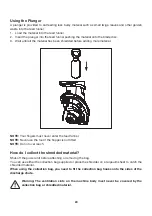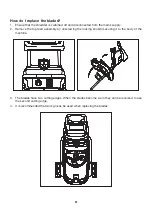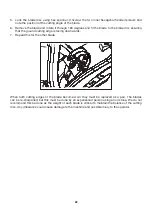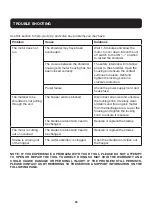
9
• Do not force the tool: It will do the job better and safer at the
rate for which it was intended.
• Arrange cord: Ensure the cord is arranged so that it cannot be
tripped over, stopped on or have heavy weights rested on it and
make sure that the cord will not be subjected to any damage.
• Do not abuse the cable: Never carry the tool by the cord or pull
it to disconnect it from the socket. Keep the cord away from
heat, oil and sharp edges.
• Do not over reach: Keep proper footing and balance at all times.
• Maintaining your tool: Keep cutting blade sharp and clean for
better performance. Follow instructions for lubrication and
changing accessories. Inspect tool cable periodically and if
damaged have it repaired by an authorized service facility.
Inspect extension cable periodically and replace if damaged.
Keep handles dry, clean and free from oil and grease.
• Check damaged parts: Before further use of the tool, a guard
or other part that is damaged should be carefully checked
to determine that it would operate properly and perform its
intended function. Check for alignment of moving parts, free
running of moving parts, damage to parts, mounting and any
other conditions that may affect its operation. A guard or other
part that is damaged should be properly repaired or replaced
by an authorized service center unless otherwise indicated in
this instruction manual. Have defective switches replaced by an
authorized service facility. Do not use the tool if the switch does
not turn it on and off.
• Disconnect tools: When not in use, before servicing and when
changing accessories such as blades and cutters, always
ensure the machine is disconnected from the mains supply.
• Removing keys and wrenches: Form the habit of checking to
see that keys and adjusting wrenches are removed from the
tool before turning it on.










































